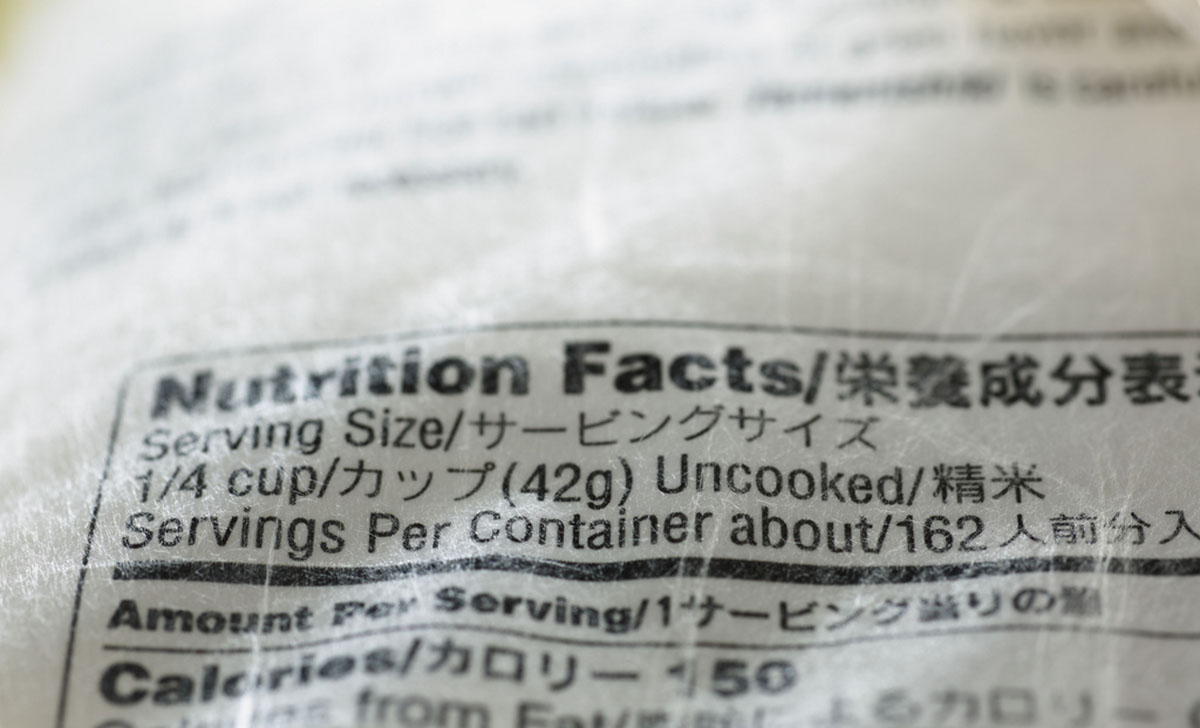Table of Contents
4. Monosodium glutamate (MSG) is hidden on many labels.
Monosodium glutamate, better known as MSG, is a flavoring agent that appears in thousands of packaged foods. Most dieters would not be surprised to find MSG on the label of prepackaged Chinese food. Most dieters would be surprised to learn that there can be more MSG than whole wheat flour in "whole wheat" bread. Whole wheat hamburger buns sold at a famous American fast food chain, for example, contain white flour, sugar, MSG, and only then whole wheat flour as their main ingredients.

Some people develop diarrhea and vomiting when they eat foods containing MSG, but most people just pick up a pound or two (up to about a kilogram) of "water weight". Avoiding MSG can help keep the water weight off. This problem ingredient can be listed as MSG, monosodium glutamate, and any of the following very long list: acid-hydrolyzed vegetable protein, autolyzed yeast, hydrolyzed corn protein, HVP, hydrolyzed casein, hydrolyzed collagen, hydrolyzed corn, hydrolyzed corn cereal solids, hydrolyzed corn gluten (there isn't actually such a thing as "corn gluten", but it is listed as a product name), hydrolyzed corn protein, hydrolyzed corn soy wheat gluten protein, hydrolyzed plant protein, hydrolyzed soy protein, hydrolyzed whey peptides, partially hydrolyzed beef stock, textured protein, or yeast extract.
5. "10% Juice" usually isn't juice.
Juice concentrates tend to be much higher in sugar than fresh juice. Some products may be a combination of filtered water and various kinds of juice concentrate. They are delicious, but their effect on weight control is a lot like drinking sugar-sweetened soft drinks. Look for "not from concentrate" on the label to get actual juice. Beware "juice" products that contain "10% juice" or even no juice at all.
6. Low-fat foods usually aren't low-calorie.
Food manufacturers usually can produce tasty snacks by eliminating either sugar or fat, but not both. Many "low-fat" foods are high in sugar, and because consumers mistakenly believe they are healthy, eaten in excess. Overeating low-fat foods can lead to failure to lose weight or even gaining more weight than when eating the "real thing".
7. In the United States, some nutrients are computed from outdated recommended daily intake figures.
Food labels in the United States use recommended daily intake numbers for vitamins and minerals that were current in 1968, but not updated for advances in nutrition science. The Institute of Medicine now recommends more magnesium, calcium, manganese, phosphorus, vitamin C, vitamin E, and vitamin K, and relying solely on food labels will not ensure adequate intake.
8. The "all-natural" label means that a product contains no added chemicals or artificial ingredients and has been minimally processed.
It does not mean that it is organic, locally raised, or free of GMOs.
9. The "organic" label means that most, although not necessarily all, of a product was made from food raised without herbicides, pesticides, chemical fertilizers, antibiotics, or bioengineering (GM0).
However, five percent of an "organic" product and up to 30 percent of a product labeled "made with organic ingredients" can be non-organic. "Local" products are not necessarily organic, or even produced on a nearby farm, if they are produced in a large state, such as California or Texas.
- A code that starts with the numeral "9" that is followed by a dash and four digits (for example, 9-1234) labels certified organic produce.
- A code that starts with the numeral "8" that is followed by a dash and four digits (for example, 8-1234) labels GMO food.
- A code that contains just four digits (for example, 1234) may contain residues of farm chemicals. These four digits are also used to identify the same fruit or vegetable if it is organic or GMO.
See Also: The Good And The Bad Side Of Nutritional Supplements
10. You can prevent problems with food labeling with an iPhone or Android app.
Several websites offer apps for scanning food labels with an iPhone or Android phone that will instantly alert you to allergens, added sugars, and problem chemical additives. Your smartphone can take a lot of the guesswork out of reading labels. Use the Fooducate app to keep track of calories and fat.
- Lisa Gosselin. Food Label Lies: How to Sort Truth From Hype, Huffington Post. 5 May 2011. http://www.huffingtonpost.com/eatingwell/food-nutrition-labels-natural-organic-local_b_747181.html. Accessed 11 February 2015.
- Photo courtesy of John Loo via Flickr: www.flickr.com/photos/johnloo/9729186926
- Mind map by SteadyHealth.com

